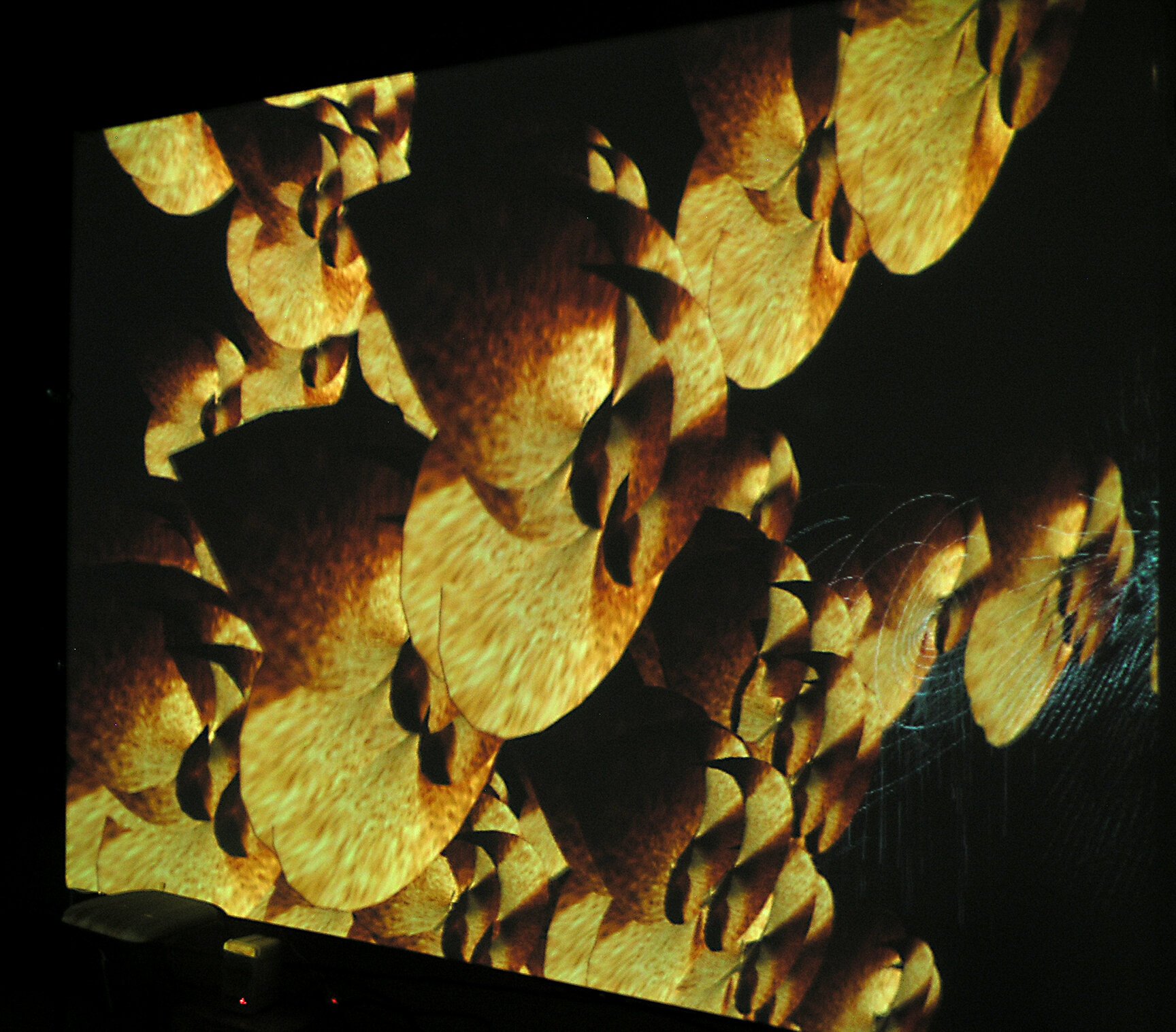100 Monkey Garden
Version 1.02 - real-time artificial eco-system
2005
Artist - David Stout
Programmers - Luke Dubois & Cory Metcalf
Viewer Guide
The 100 Monkey Garden is an artificial life system that generates a new version of itself each day of the exhibition. The 100 Monkey Garden consists of two networked screens utilizing real-time “Live” 3-D animation to create a changing population of abstract visual forms that make their own “Live” sounds.
Screen One: On the larger, left-hand screen the viewer will see two hyperactive white shapes. These shapes are the parent-forms. The viewer will notice that the parent-forms are attracted to each other and when they come together they couple and create a child-form. The child-forms may spin wildly into a final nesting place or grow slowly over time. The richly textured surfaces on the child-forms display very different color palettes over the course of a single day. These surface “skins” also create their own sounds.
Screen Two: On the smaller right-hand screen is a single expanding and contracting visual form. This shapeshifter is a feedback system comprised of over 50 mathematic equations describing various theoretical shapes. The viewer will observe that the shapeshifter will occasionally grow very loud and transform into a shimmering red group or flock of objects. When this happens the shapeshifter becomes a predator who will leave the small screen and enter the larger screen to prey on the child-forms. If the right-hand screen is blank the viewer should look for the predator among the parents and children on the left-hand screen. The viewer may notice the children take on a brighter glow and then disappear as they are “eaten”. In this way the system remains within the limits of growth. This limit is defined by the rendering power of the computer system. In addition to the basic behaviors described above there is a latent “gene” that may emerge if the child population should grow beyond 100. If this gene is turned on, each successive birth will cause a number of the individual replicant children to change as a single group to adopt a new identical form. It is likely that the active eating behavior of the predator will not allow this to happen.





